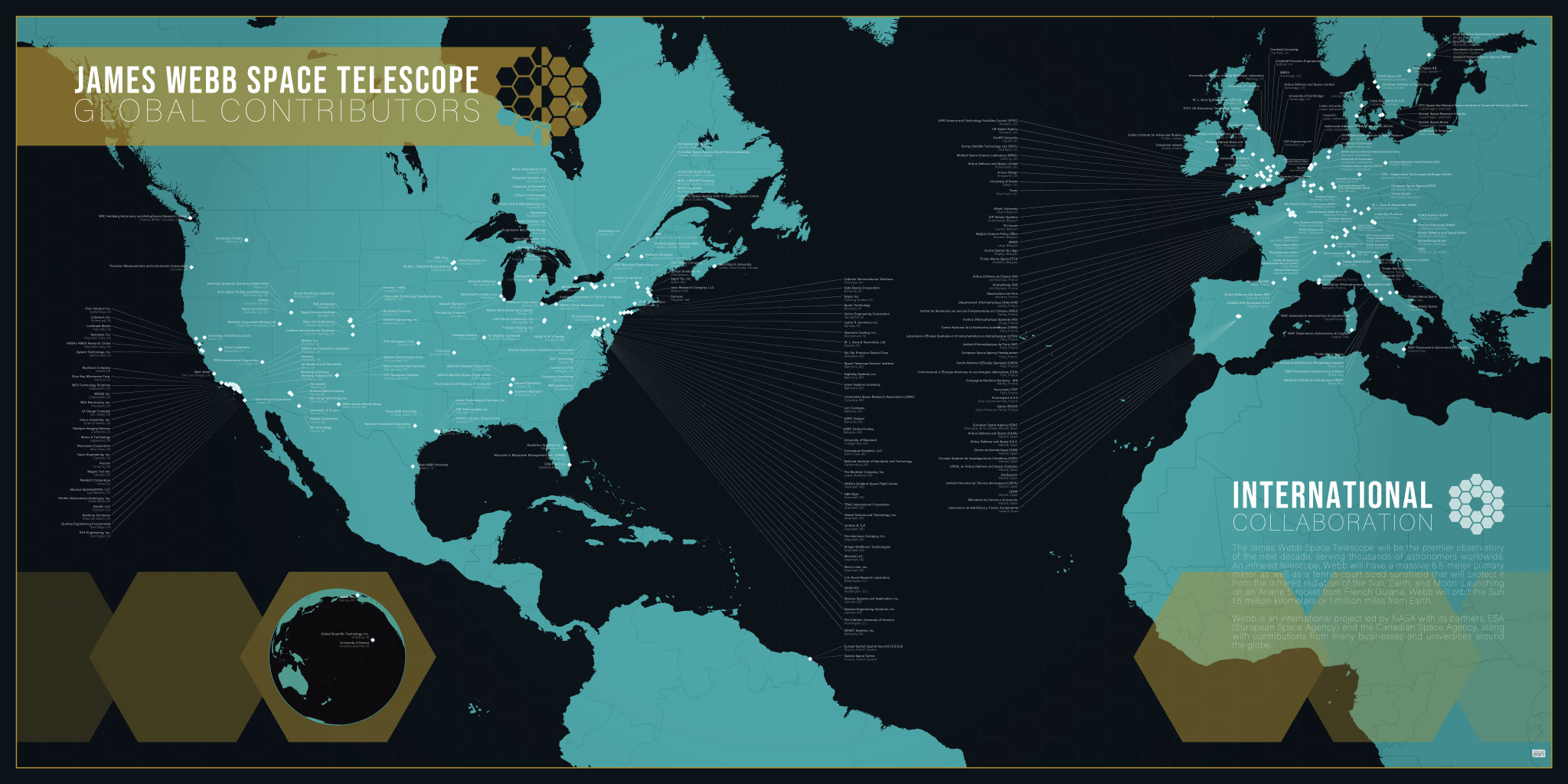The James Webb Space Telescope is an international endeavor with widespread global contributions and experts in more than a dozen countries dedicated to the build, launch, and future science of this flagship NASA space observatory. The cooperation and collaboration on Webb is an incredible testament to what is possible with worldwide teamwork.
For an interactive, zoomable version of this map and text listing of partners, please click link.
Thousands of scientists, engineers, and technicians from 14 countries, 29 U.S. states, and Washington, D.C. contributed to build, test, and integrate Webb. In total, 258 distinct companies, agencies, and universities participated – 142 from the United States, 104 from 12 European nations, and 12 from Canada.
“The Webb international partnerships are the perfect example of what can be accomplished when we, as a human race, work together to attain a common goal,” said Bill Ochs, the Webb project manager at NASA’s Goddard Space Flight Center in Greenbelt, Maryland. “When Webb launches, it will truly be a telescope for the world.”
As another element of international collaboration, Webb will launch in 2021 onboard an Ariane 5 rocket from the European Spaceport located near Kourou, French Guiana, on the northeast coast of South America.
Credits: NASA’s Goddard Space Flight Center.
Once in orbit, scientists will use Webb to conduct cutting-edge research on the cosmos. Webb will be a general-purpose observatory, meaning that competitively selected proposals from scientists around the world will be used to develop Webb’s observing plans. For more on the Webb science proposal process, please see http://www.stsci.edu/jwst/science-planning.
“Webb is a tremendous feat of engineering, built through the collaborative work and great dedication of a vast international community,” said Gregory L. Robinson, the Webb program director at NASA Headquarters in Washington, D.C. “Once launched, astronomers worldwide will be able to study the world-class science it will deliver and give us a broader understanding of the origins of our universe, inspiring future generations.”
Built and available for use by an international consortium, Webb will serve astronomers worldwide. In an effort to cross language barriers and connect Webb to all people, top facts about Webb were translated into 44 languages. For more on the Webb Language Cards, please see https://jwst.nasa.gov/content/features/keyFactsInternational/.
The James Webb Space Telescope will be the world’s premier space science observatory when it launches in 2021. Webb will solve mysteries in our solar system, look beyond to distant worlds around other stars, and probe the mysterious structures and origins of our universe and our place in it. Webb is an international program led by NASA with its partners, ESA (European Space Agency) and the Canadian Space Agency.
For more information about the Webb Global Contributor Map, visit https://svs.gsfc.nasa.gov/13371
For more information about Webb, visit www.nasa.gov/webb
By Peter Sooy
NASA Goddard Space Flight Center
























